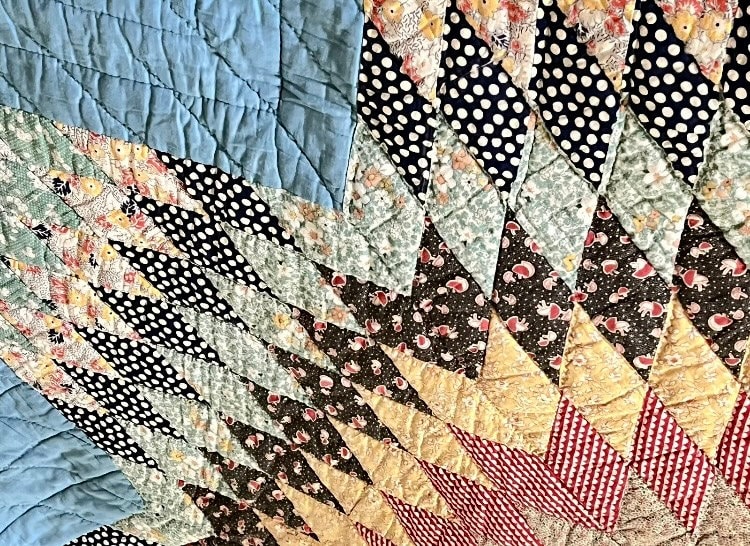by Cristi Painter
As an ardent lover of quilts, I’ve often found that there’s a deep, palpable connection between us and the tapestries of history. Antique quilts, in particular, tell tales of bygone eras, artisans of the past, and the nuances of a culture. At Bobbins & Lace, we’ve taken this passion a step further by grading these pieces of history, ensuring they get the recognition they deserve.
But what exactly does grading mean in the world of quilts? Let’s unravel this together.
1. Why Grade Antique Quilts?
Grading isn’t merely about determining a quilt’s worth. It’s about understanding its story, craftsmanship, and preservation level. A well-graded quilt provides potential buyers with a comprehensive view of its condition, history, and authenticity.
2. Factors Considered in Quilt Grading:
- Age: Determining a quilt’s age requires a keen eye. Stitch patterns, fabric types, and coloring methods can offer clues.
- Craftsmanship: The intricacy of patterns, consistency of stitches, and overall design play a crucial role.
- Material Integrity: We assess fabric quality, signs of wear, and any potential damage.
- Provenance: A quilt’s history and origins can enhance its value. For example, a quilt from a notable family or event holds higher significance.
- Preservation: How well a quilt has been stored or maintained over the years factors into its grade. A well-preserved quilt from the 1800s might grade higher than a poorly preserved one from the 1950s.
3. Grading Scale:
While various grading scales exist, at Bobbins & Lace, we use a nuanced scale that considers all the above factors. Our scale ranges from ‘Mint’ (flawless, museum-quality) to ‘Poor’ (significant wear or damage but still of historical significance).
4. The Importance of Authenticity:
A crucial element of grading is ensuring the quilt’s authenticity. With the market’s growth, replicas or non-authentic pieces can sometimes find their way into collections. At Bobbins & Lace, our combined expertise in quilting and biology ensures a rigorous examination process.
5. A Word on Modern Quilts:
While our focus remains on vintage and antique quilts, it’s essential to appreciate contemporary quilting art. Modern quilts, though not graded in the traditional sense, represent evolving techniques and changing narratives.
Wrapping Up:
Quilt grading is a blend of art and science, emotion and method. It’s about preserving history, respecting craftsmanship, and sharing stories that span generations. If you own an antique quilt and are curious about its grade or story, reach out. We’d love to embark on this journey of discovery with you.
Stay connected with Bobbins & Lace for more insights into the world of quilts. Don’t forget to check out our featured antique quilt of the week, a testament to the beauty of this age-old craft.

